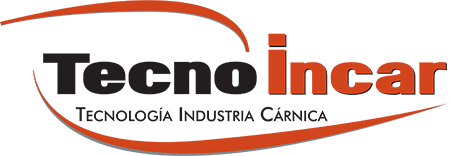Electricity and Automation play a fundamental role in the meat industry, driving efficiency, productivity, and safety in all processes, from slaughter and butchering to processing and distribution.
Below, I explain how both elements are integrated and their importance:
Main Applications:
- – Processing Machinery: Equipment such as cutters, grinders, stuffers, and packers operate on electric power, allowing for continuous and precise operations.
- – Refrigeration and Freezing: Refrigeration systems are critical for keeping meat in optimal conditions. Industrial refrigerators, freezing chambers, and cooling tunnels depend on electricity to maintain appropriate temperatures.
- – Plant Lighting: Lighting in processing plants and warehouses is important not only for ensuring safety but also for complying with quality and hygiene regulations.
- – Ventilation and Air Conditioning Systems: To ensure air quality and maintain proper sanitary conditions, meat facilities are equipped with electric ventilation and air conditioning systems.
- – Control and Monitoring Equipment: Electricity powers critical monitoring systems, such as temperature, pressure, humidity, and air quality sensors, which are essential for ensuring food safety.
Automation in the Meat Industry
Automation in the Meat Industry refers to the use of machinery and software-controlled systems to perform repetitive tasks precisely and efficiently, minimizing human intervention. Automation encompasses all stages of meat processing and enhances traceability, safety, and product quality.
Key Applications of Automation:
- Automatic butchering machines use robots and programmable controllers to make precise cuts, optimizing meat use and reducing waste.
- Conveyor belts and automatic sorting systems move products between processing stations without manual intervention, maintaining an efficient workflow.
– Process Control and Monitoring:
- SCADA (Supervisory Control and Data Acquisition) systems allow real-time control of production lines, enabling operators to adjust parameters and ensure the proper functioning of equipment.
- PLCs (Programmable Logic Controllers) are essential for coordinating and controlling various stages of the production process, from butchering to packaging.
– Automatic Packaging and Labeling:
- Automatic packaging machines seal, weigh, and label products, ensuring uniformity and accuracy. This is crucial for complying with quality and traceability regulations in the food sector.
- Automated labeling systems can customize labels based on destination or production batch, ensuring accurate information about the product’s origin and characteristics.
– Intelligent Refrigeration and Freezing Systems:
- Refrigeration equipment controlled by sensors and algorithms automatically adjusts temperatures based on product needs and external conditions, optimizing energy consumption.
- Automated freezing tunnels and refrigeration chambers enable the efficient and secure storage of large volumes of meat products.
– Traceability and Food Safety:
- Automation facilitates traceability, as systems can record and store data at each stage of the production process (slaughter, processing, packaging). This allows companies to track the origin of a batch in case of quality issues or market recalls.
- Automatic inspection systems using cameras, X-rays, or sensors detect contaminants, defects, or irregularities in products.
– Predictive Maintenance:
Automated systems combined with sensors enable predictive maintenance, meaning machinery sends alerts when potential failures are detected. This reduces unplanned downtime and maintenance costs.
Benefits of Combining Electricity and Automation:
– Operational Efficiency: Automation reduces production times, minimizes human errors, and allows for continuous production. This is key to meeting high-volume demands in the meat industry.
– Cost Reduction: With optimized use of electricity and automation of processes, companies can significantly reduce operational costs, both in labor and energy consumption.
– Improved Safety and Quality: Automated and electrically monitored systems enhance hygienic conditions and workplace safety, while also ensuring consistent product quality.
– Traceability and Regulatory Compliance: Automation allows for more accurate product tracking, facilitating compliance with food safety regulations.
On our YouTube channel, you can find some of our work.

